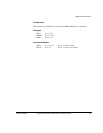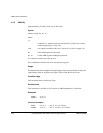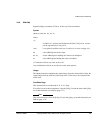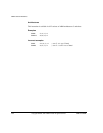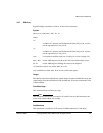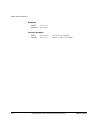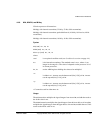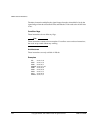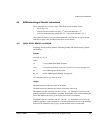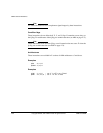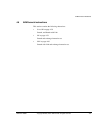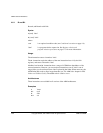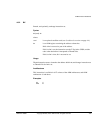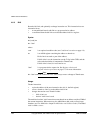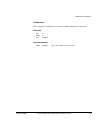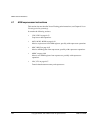
ARM Instruction Reference
ARM DUI 0068B Copyright © 2000, 2001 ARM Limited. All rights reserved. 4-55
4.5 ARM saturating arithmetic instructions
These operations are saturating (
SAT
). This means that if overflow occurs:
• the Q flag is set
• if the full result would be less than –2
31
, the result returned is –2
31
• if the full result would be greater than 2
31
–1, the result returned is 2
31
–1.
The Q flag can also be set by two other instructions (see SMLAxy on page 4-46 and
SMLAWy on page 4-49), but these instructions do not saturate.
4.5.1 QADD, QSUB, QDADD, and QDSUB
Saturating Add, Saturating Subtract, Saturating Double and Add, Saturating Double
and Subtract.
Syntax
op{cond} Rd, Rm, Rn
where:
op
is one of
QADD
,
QSUB
,
QDADD
, or
QDSUB
.
cond
is an optional condition code (see Conditional execution on page 4-4).
Rd
is the ARM register for the result.
Rm, Rn
are the ARM registers holding the operands.
r15 cannot be used for any of
Rd
,
Rm
, or
Rn
.
Usage
The
QADD
instruction adds the values in
Rm
and
Rn
.
The
QSUB
instruction subtracts the value in
Rn
from the value in
Rm
.
The
QDADD
instruction calculates
SAT(Rm + SAT(Rn * 2))
. Saturation can occur on the
doubling operation, on the addition, or on both. If saturation occurs on the doubling but
not on the addition, the Q flag is set but the final result is unsaturated.
The
QDSUB
instruction calculates
SAT(Rm - SAT(Rn * 2))
. Saturation can occur on the
doubling operation, on the subtraction, or on both. If saturation occurs on the doubling
but not on the subtraction, the Q flag is set but the final result is unsaturated.



